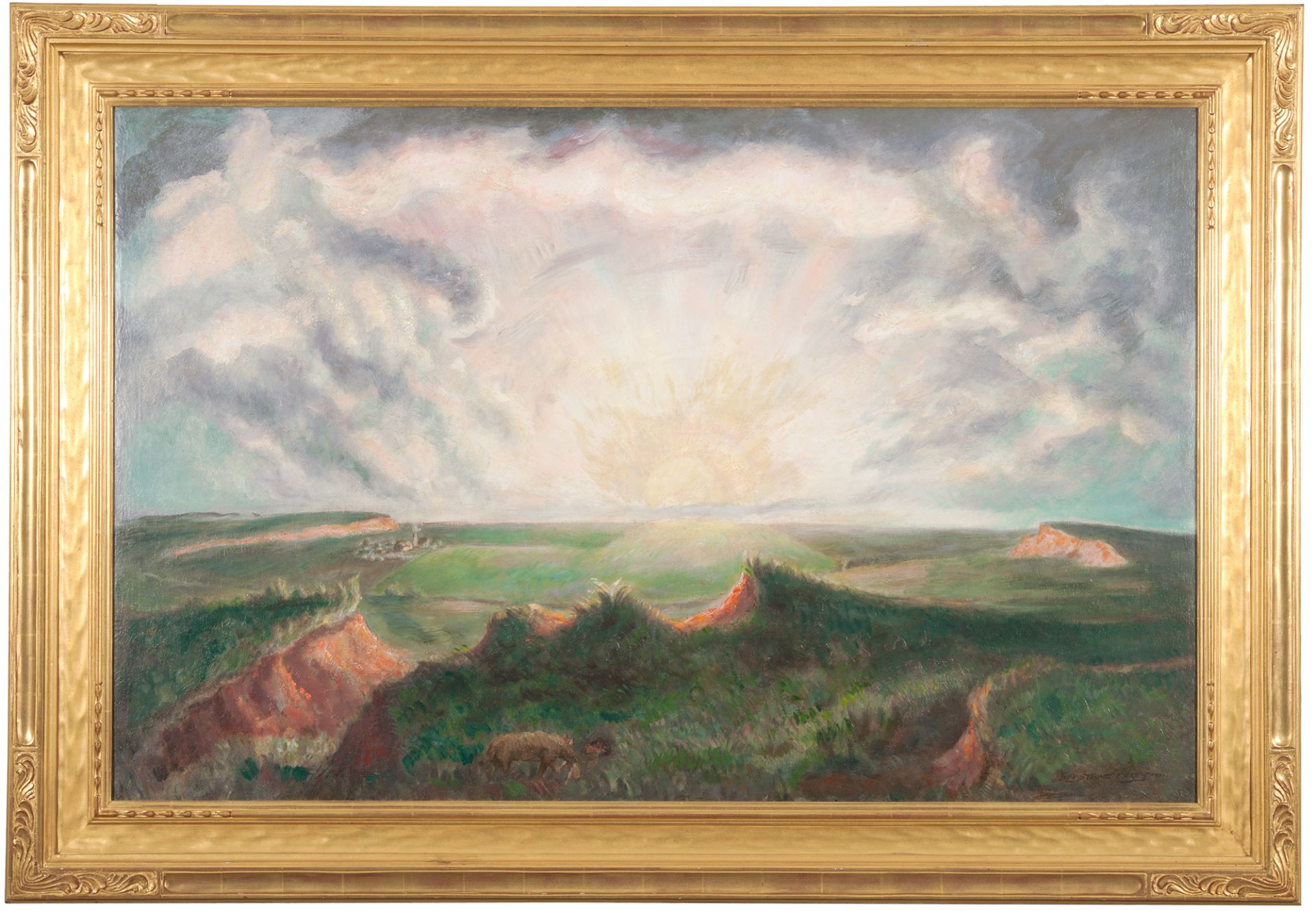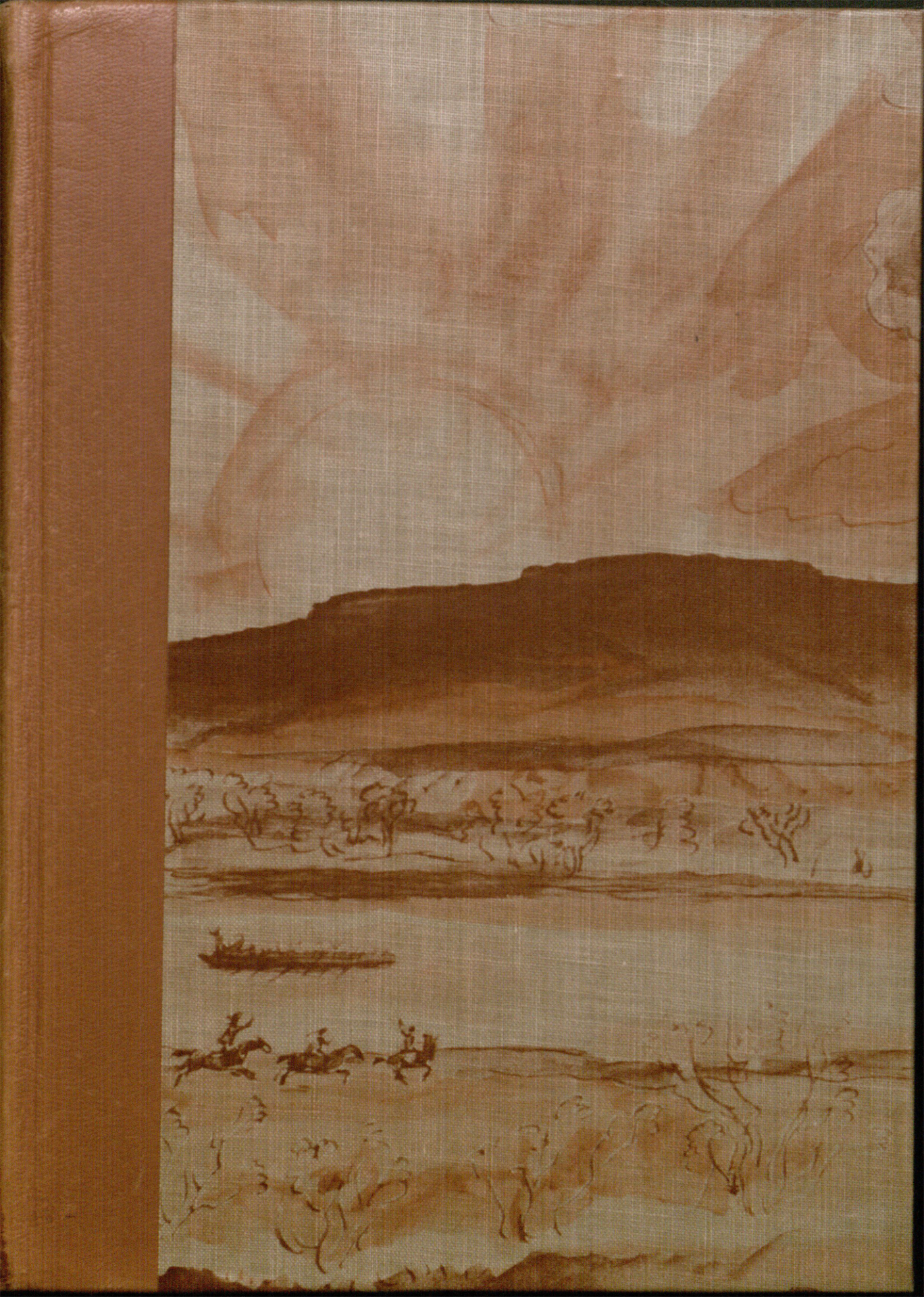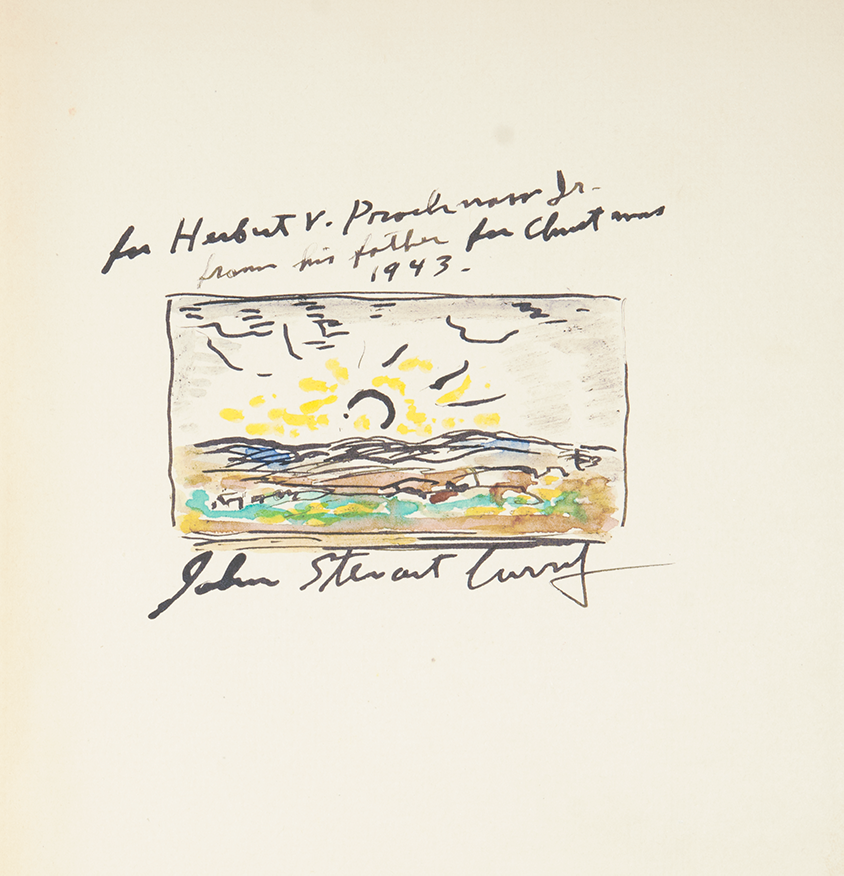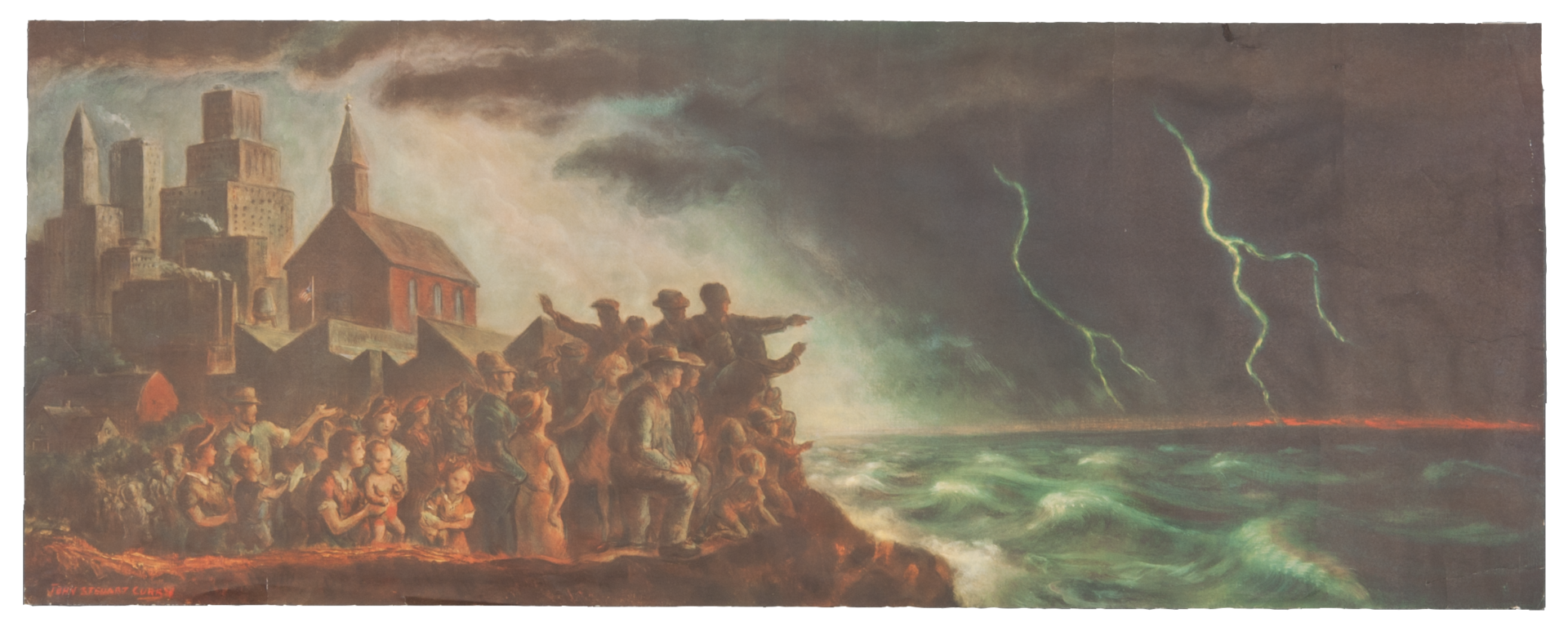In Sunrise over Kansas, Curry presents an emerging sun spreading its light across the rolling hills and red soil of Heart Ranch in Barber County, Kansas. In the foreground, a coyote brings food to its young.
Curry’s mid-1930s experiments mixing resins and oil-based materials caused the center of the sunrise to become discolored over time. Recent conservation of the affected area has helped show how Curry sought to capture the sun’s brightness using a subtle blend of white, yellow, and pink.





















